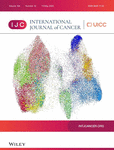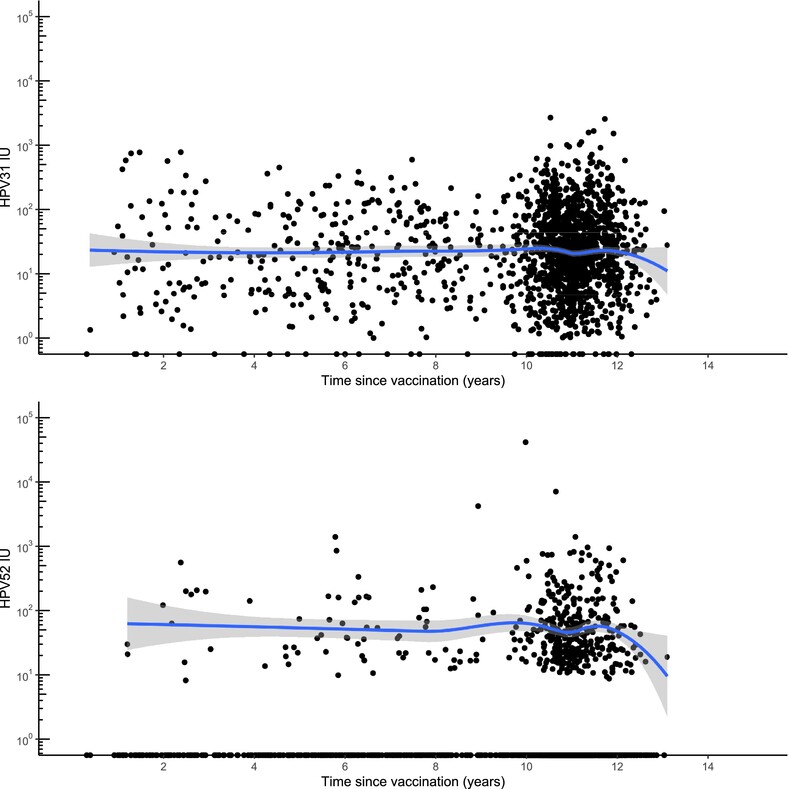Journal list menu
Export Citations
Download PDFs
ISSUE INFORMATION
EDITORIAL
United by Unique: A call for people-centred cancer care on World Cancer Day 2025
- Page: 1847
- First Published: 30 January 2025
REVIEW
Scientific approaches to defining HPV vaccine-induced protective immunity
- Pages: 1848-1857
- First Published: 13 February 2025
RESEARCH ARTICLE
Cancer Epidemiology
Long-term risk and characteristics of cerebrovascular events after upper body radiotherapy among childhood cancer survivors in the DCCSS-LATER cohort
- Pages: 1858-1872
- First Published: 16 December 2024

What's new?
Due to the nature of cancer treatments, childhood cancer survivors have an increased risk of serious adverse events later in life. Here, the authors examined the incidence of cerebrovascular events (CVEs) among childhood cancer survivors who had received upper body radiotherapy. They found that 9% of these patients experienced a cerebrovascular event, such as a stroke or transient ischemic attack, within 40 years of their cancer diagnosis. These findings could help inform follow-up practices, including screening and management of modifiable CVE risk factors, among cancer survivors.
Assessment of pain prevalence in cancer patients undergoing anticancer treatments and in cancer survivors after completion of anticancer treatments: A French nationwide cross-sectional study
- Pages: 1873-1884
- First Published: 03 December 2024
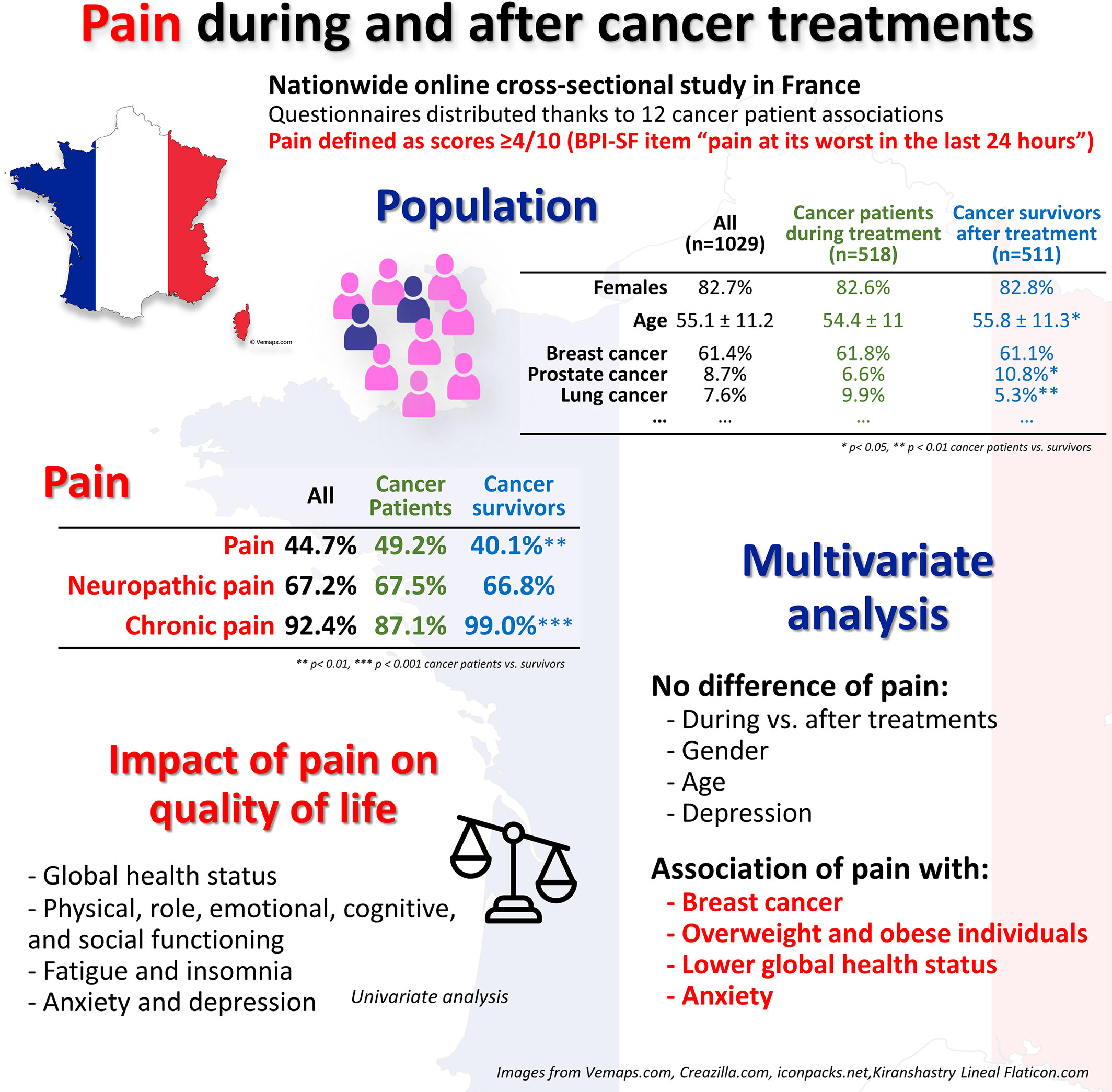
What's new?
Cancer pain often impacts quality of life (QoL) and mental health, potentially worsening the severity of psychological symptoms, such as anxiety and depression. To mitigate these effects and improve pain management, regular evaluation of pain prevalence is essential. Here, the authors investigated pain prevalence among cancer patients and survivors in France, where recent data on cancer pain is lacking. Analyses show that pain during and after cancer is common, being reported in 49.2% and 40.1% of patients and survivors, respectively. Pain negatively impacted QoL in both groups and, especially in patients, adversely affected global health status and daily functioning.
Associations of chronic liver disease and liver cancer with glyphosate and its metabolites in Thailand
- Pages: 1885-1897
- First Published: 09 December 2024
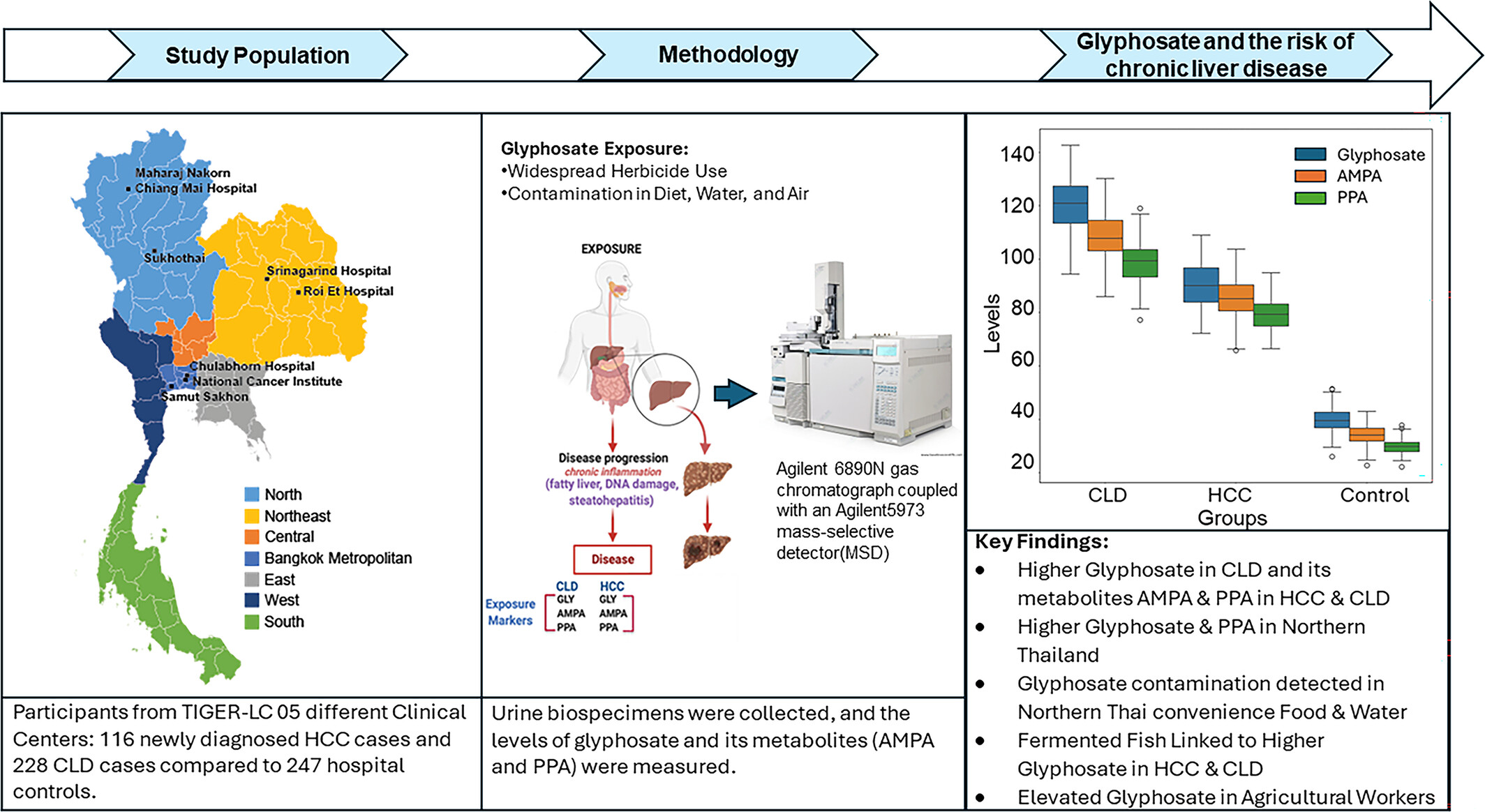
What's new?
The IARC classifies the herbicide glyphosate as a probable carcinogen, and animal studies have shown that glyphosate exposure harms the liver and kidneys. Here, the authors investigate the relationship between glyphosate exposure and chronic liver disease (CLD) and hepatocellular cancer (HCC). They analyzed urine samples from patients newly diagnosed with HCC, those with CLD, and healthy individuals for the presence of glyphosate and its metabolites. CLD patients had higher levels of glyphosate compared with HCC patients and controls, and glyphosate metabolites were present at higher levels in both HCC and CLD patients compared with controls.
Etiology of prostate cancer with the TMPRSS2:ERG fusion: A systematic review of risk factors
- Pages: 1898-1908
- First Published: 11 December 2024

What's new?
The most common somatic alterations in primary prostate cancer are gene fusions involving TMPRSS2 and ERG. TMPRSS2:ERG-positive cancers may be etiologically distinct from cancers without this fusion. This study sought to better understand etiologic factors underlying TMPRSS2:ERG fusion in prostate cancer via systematic review of epidemiologic studies. Of the etiologic factors for tumors with the TMPRSS2:ERG fusion, most were not associated with TMPRSS2:ERG-negative prostate cancer risk. Observed differences in relation between etiologic factors and TMPRSS2:ERG-positive prostate cancer require further investigation but offer novel insight into diverse etiologies of prostate cancer subtypes and mechanisms of carcinogenesis.
Birth characteristics and the risk of childhood brain tumors: A case–control study in Ontario, Canada
- Pages: 1909-1915
- First Published: 13 December 2024
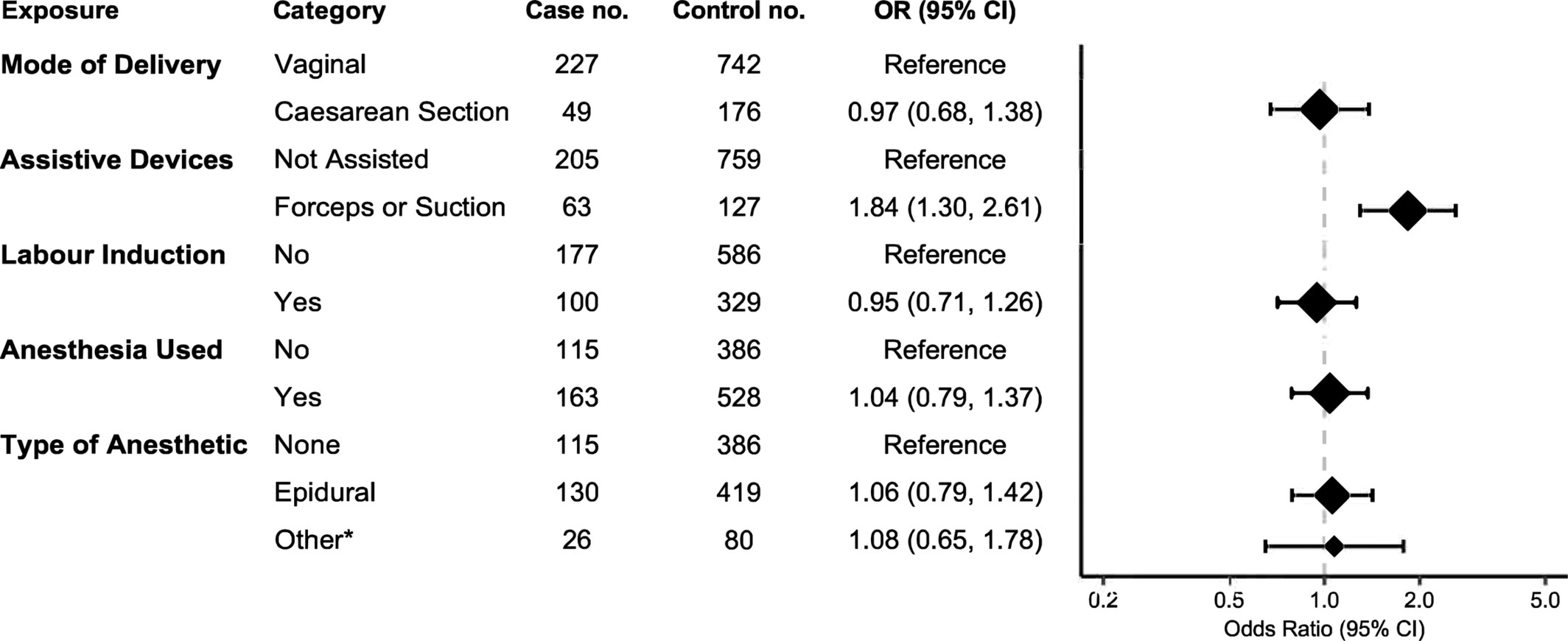
What's new?
Early-life events such as birth through different delivery modes and early infections may influence the risk of developing brain tumor in childhood. Using data from the Childhood Brain Tumour Epidemiology of Ontario study, the authors found that instrument-assisted vaginal delivery almost doubled childhood brain tumor risk, warranting balanced consideration of the risks associated with assisted delivery and cesarean section in clinical practice. Regardless of histology, higher birth order was inversely associated with childhood brain tumor development, compatible with the hypothesis of early infections enhancing immune response and lowering childhood cancer risk.
Smokeless tobacco (snuff) and site-specific cancer risks in adult Black South African women: Findings from the Johannesburg Cancer Study
- Pages: 1916-1925
- First Published: 16 December 2024

What's new?
In South Africa, snuff, a form of smokeless tobacco, is used in certain traditional and social practices. Although possibly perceived by users as a safe alternative to tobacco smoking, snuff use is linked to elevated cancer risk. Here, associations between snuff use and site-specific cancer risk was evaluated among females in Johannesburg using a series of case-control comparisons within the Johannesburg Cancer Study. Among ever users, positive associations were identified between snuff use and cervical, eye, and adnexal cancers. The findings offer new insight into cancer risk particularly among Black South African women, among whom snuff use is relatively common.
Cancer Genetics and Epigenetics
DNA methylation and copy number alterations in the progression of HPV-associated high-grade vulvar intraepithelial lesion
- Pages: 1926-1935
- First Published: 12 February 2025
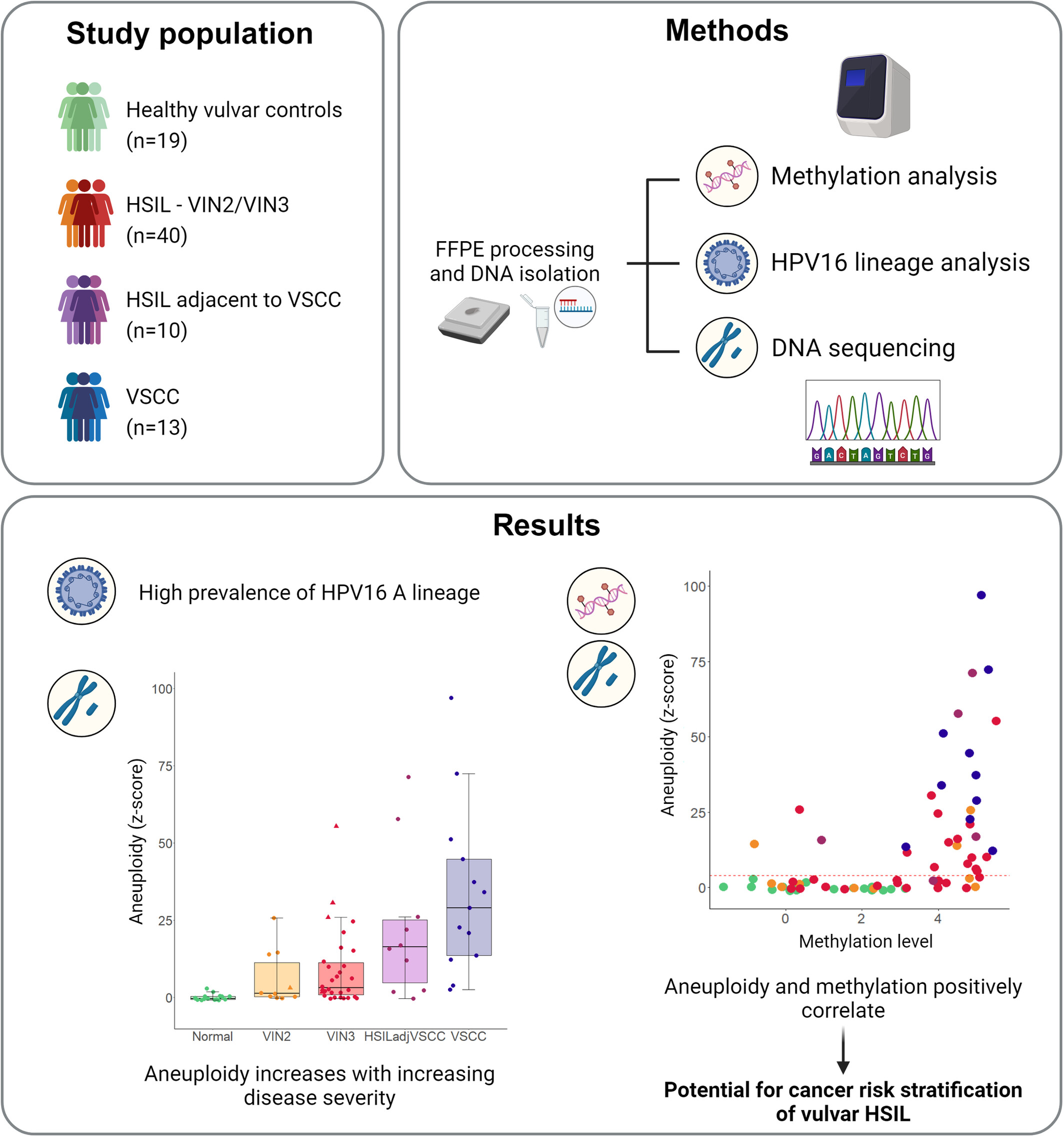
What's new?
Patients with human papillomavirus (HPV)-associated high-grade vulvar intraepithelial lesion (HSIL) often undergo damaging treatments to prevent progression to cancer. Molecular characterization of HSIL to assess progression risk could reduce the need for aggressive interventions. Here, cancer risk stratification of HSIL was investigated by copy number alterations (CNAs) and DNA methylation analysis in vulvar specimens. Analyses reveal a positive relationship between CNAs and DNA methylation, wherein both increase with progression to vulvar cancer. HPV16 lineages, which influence viral oncogenicity, had no relationship with progression to cancer. The novel insights underscore the prognostic potential of CNAs and DNA methylation for cancer risk stratification in HSIL patients.
Cancer Therapy and Prevention
Comparative efficacy and safety of PD-1 versus PD-L1 inhibitors in breast cancer treatment: A systematic review and meta analysis
- Pages: 1936-1949
- First Published: 29 December 2024
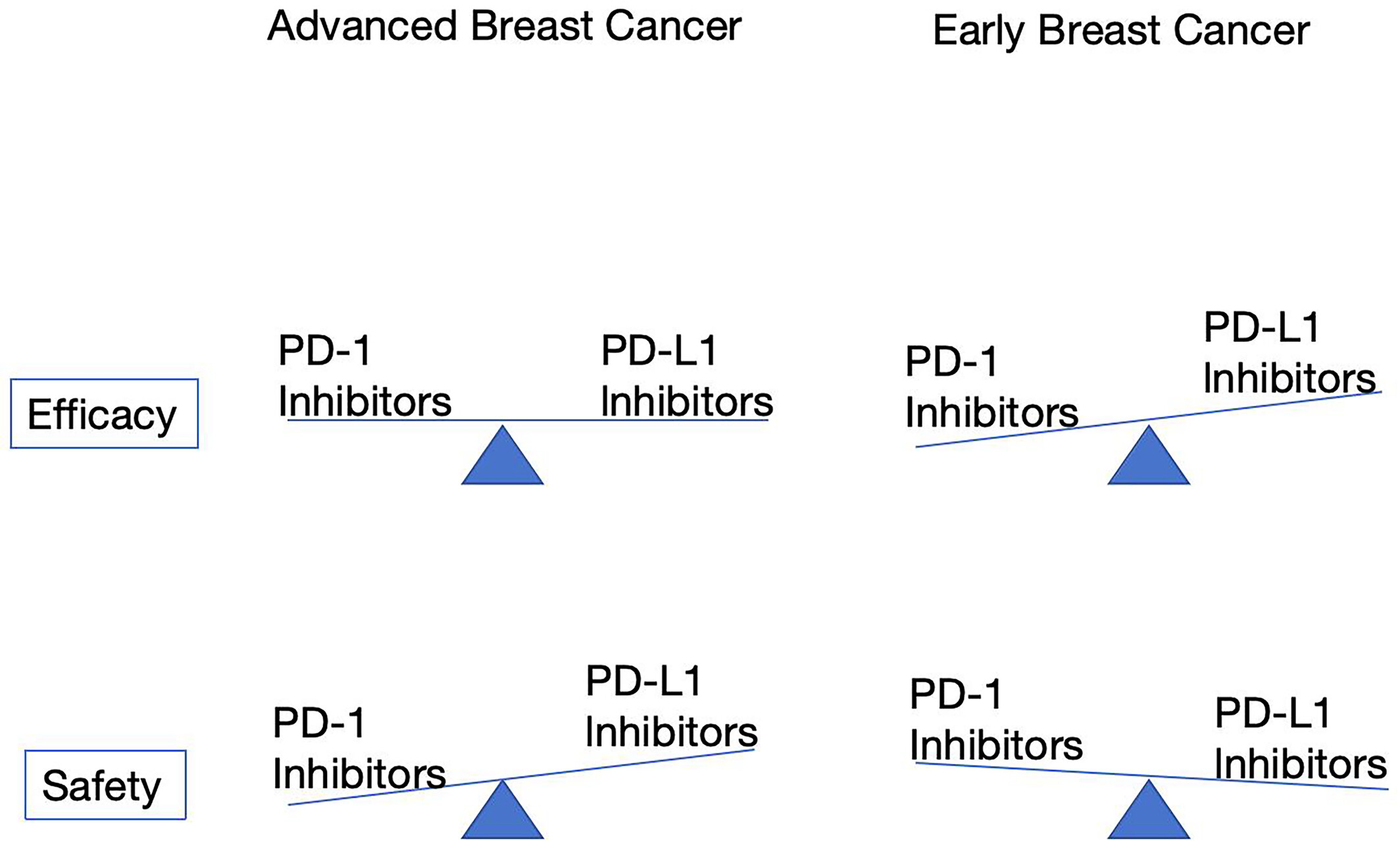
What's new?
Inhibitors targeting either PD-1 or PD-L1 allow T cells to more actively attack cancer cells, thereby boosting the immune response against cancer. Which group of these agents is most effective against breast cancer, however, remains uncertain. This systematic review assessed the efficacy and safety of PD-1 and PD-L1 inhibitors, as monotherapy or combined with chemotherapy, for breast cancer. In the case of advanced breast cancer, although comparable in impact on survival, PD-1 inhibitors may be preferred, owing to a lower likelihood of adverse events. As neoadjuvant therapy, PD-1 inhibitors outperform PD-L1 inhibitors in achieving higher pathological complete response rates.
Considerations to forgo systemic treatment in patients with advanced esophageal or gastric cancer: A real-world evidence study
- Pages: 1950-1960
- First Published: 09 January 2025
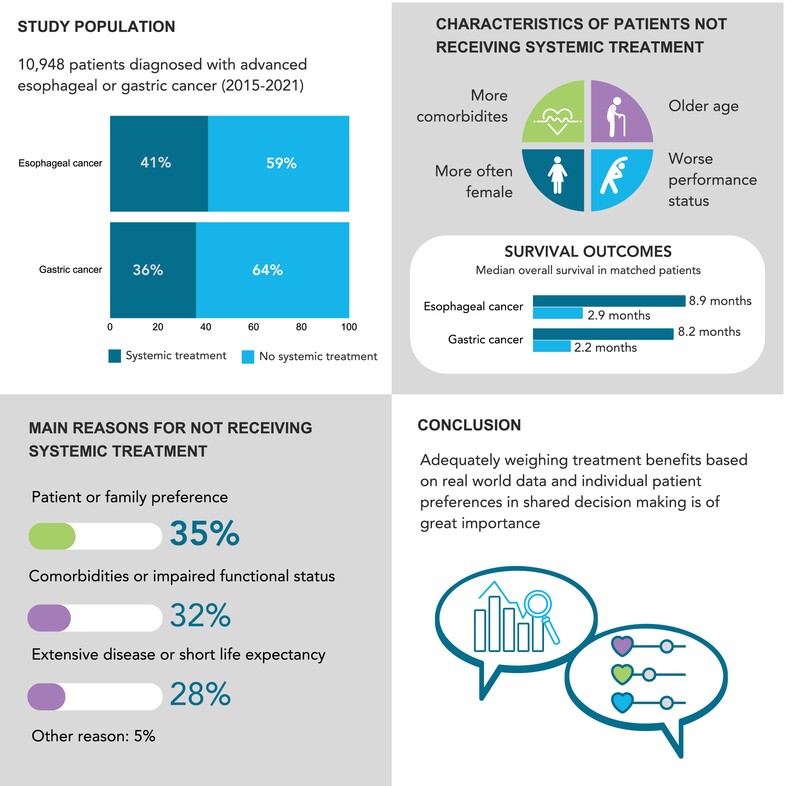
What's new?
Most patients with advanced esophageal or gastric cancer do not start palliative systemic treatment. The considerations and rationale in forgoing systemic treatment remain unclear. This nationwide study of patients diagnosed with advanced esophageal or gastric cancer between 2015 and 2021 indicates that the main reason for not starting palliative systemic treatment is patient preference. Overall survival was significantly longer with systemic treatment in matched patients with similar prognostic profiles at diagnosis. The findings highlight the importance of balancing treatment benefits with patient priorities based on real-world data, and underscore the need for personalized decision-making in advanced esophageal and gastric cancer.
Increased serum NfL and GFAP levels indicate different subtypes of neurologic immune-related adverse events during treatment with immune checkpoint inhibitors
- Pages: 1961-1971
- First Published: 20 January 2025
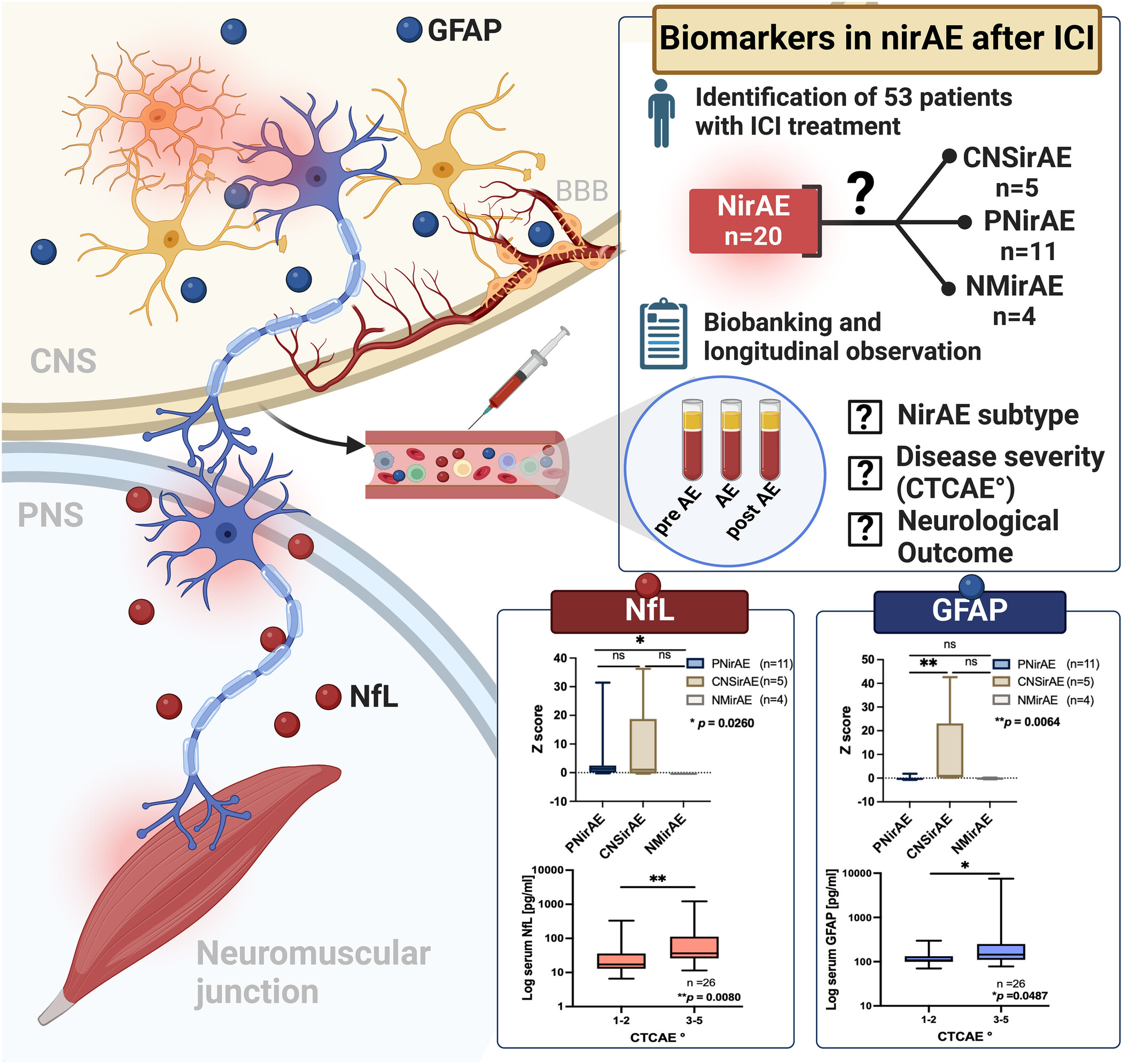
What's new?
Neurological immune-related adverse events from immune checkpoint inhibitor therapy are rare, but potentially life-threatening. Here, the authors identified serum neurofilament light chain (NfL) and GFAP, an astrocyte activation marker, as promising biomarkers. Serum NfL levels were significantly increased in patients with neurological immune-related adverse events compared to controls. NfL could distinguish neurological immune-related adverse events affecting the central nervous system and peripheral nerves and those exclusively involving the neuromuscular junction and/or muscles. Moreover, GFAP distinguished central nervous system from other immune-related adverse events. NfL levels in neurological immune-related adverse events correlated with the severity and outcomes of neurological side effects.
Comparing PD-L1 and PD-1 inhibitors plus bevacizumab combined with hepatic arterial interventional therapies in unresetable hepatocellular carcinoma: A single-center, real-world study
- Pages: 1972-1985
- First Published: 20 January 2025
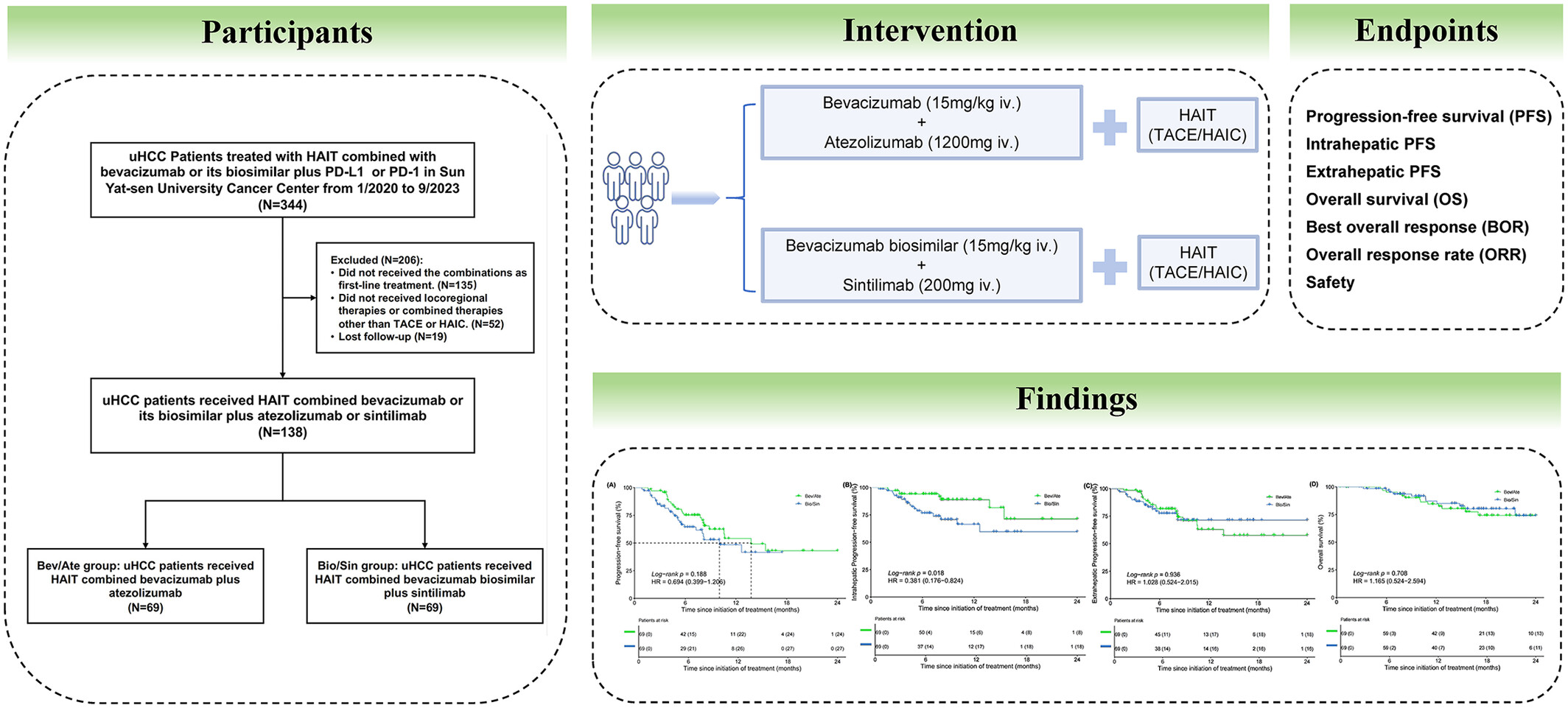
What's new?
While programmed cell death-ligand 1 (PD-L1) and programmed cell death-1 (PD-1) inhibitors are potentially valuable therapies for unresectable hepatocellular carcinoma (uHCC), their utility in combination therapies remains uncertain. Here, efficacy and safety of the PD-L1 inhibitor atezolizumab or the PD-1 inhibitor sintilimab plus bevacizumab or its biosimilar, in addition to hepatic arterial interventional therapy (HAIT), were investigated for uHCC. Among patients who received atezolizumab plus bevacizumab combined with HAIT, intrahepatic progression-free survival was significantly improved. Atezolizumab was superior to sintilimab, notably for patients with vascular invasion. Atezolizumab-bevacizumab in combination with HAIT warrants further investigation as a treatment strategy for uHCC.
Consensus statement for the diagnosis, treatment, and prognosis of kaposiform hemangioendothelioma
- Pages: 1986-1994
- First Published: 20 January 2025
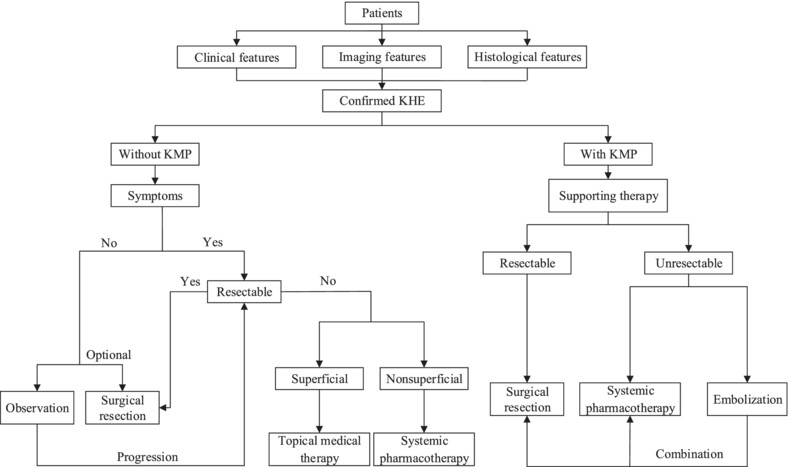
What's new?
Kaposiform hemangioendothelioma (KHE) is a rare borderline tumor of blood vessels typically diagnosed in childhood. Clinical manifestation of KHE varies, however, potentially complicating diagnosis and treatment. In the present report, the authors integrated information from the scientific literature and from expert opinion to develop updated diagnostic and treatment recommendations for KHE. Consensus statements were developed for clinical manifestations of KHE, with guidelines for imaging, histopathological analysis, differential diagnosis, and treatment. The recommendations include insights on prognosis and the emergence of residual lesions following treatment. The newly developed recommendations could be valuable for helping guide clinical decisions for KHE patients.
Infectious Causes of Cancer
High-risk human papillomavirus genotypes in previously unscreened reproductive-age women in Ethiopia: A community-based cohort study
- Pages: 1995-2009
- First Published: 14 February 2025
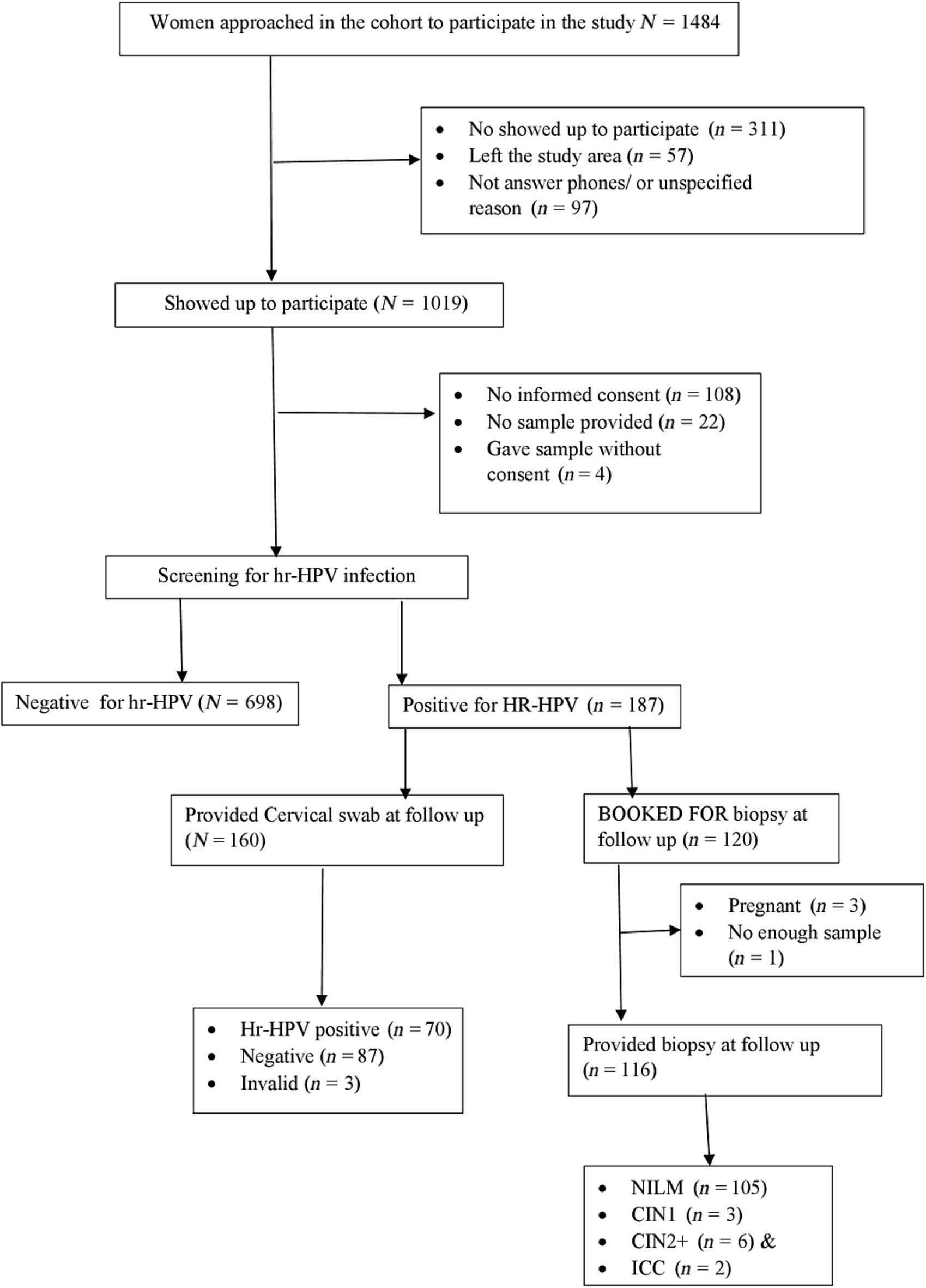
What's new?
High-risk human papillomavirus (hrHPV) can lead to cervical cancer, a major public health concern, and effective cervical cancer screening should include HPV testing. Here, the authors assessed the rate of HPV infection and HPV genotype distribution using vaginal self-sampling among women of reproductive age in Ethiopia. Among 885 women tested, 21% were positive for hrHPV and 7% had cervical intraepithelial neoplasia grade 2 or worse (CIN2+). hrHPV genotypes other than 16/18 were detected in 75% of these high-grade lesions, suggesting that the nine-valent HPV vaccine would be more effective than the quadrivalent among this population for preventing cervical cancer.
Tumor Immunology and Microenvironment
CD8+ T cells in patients with hypopharyngeal squamous cell carcinoma are susceptible to radiation-induced damage
- Pages: 2010-2023
- First Published: 07 February 2025
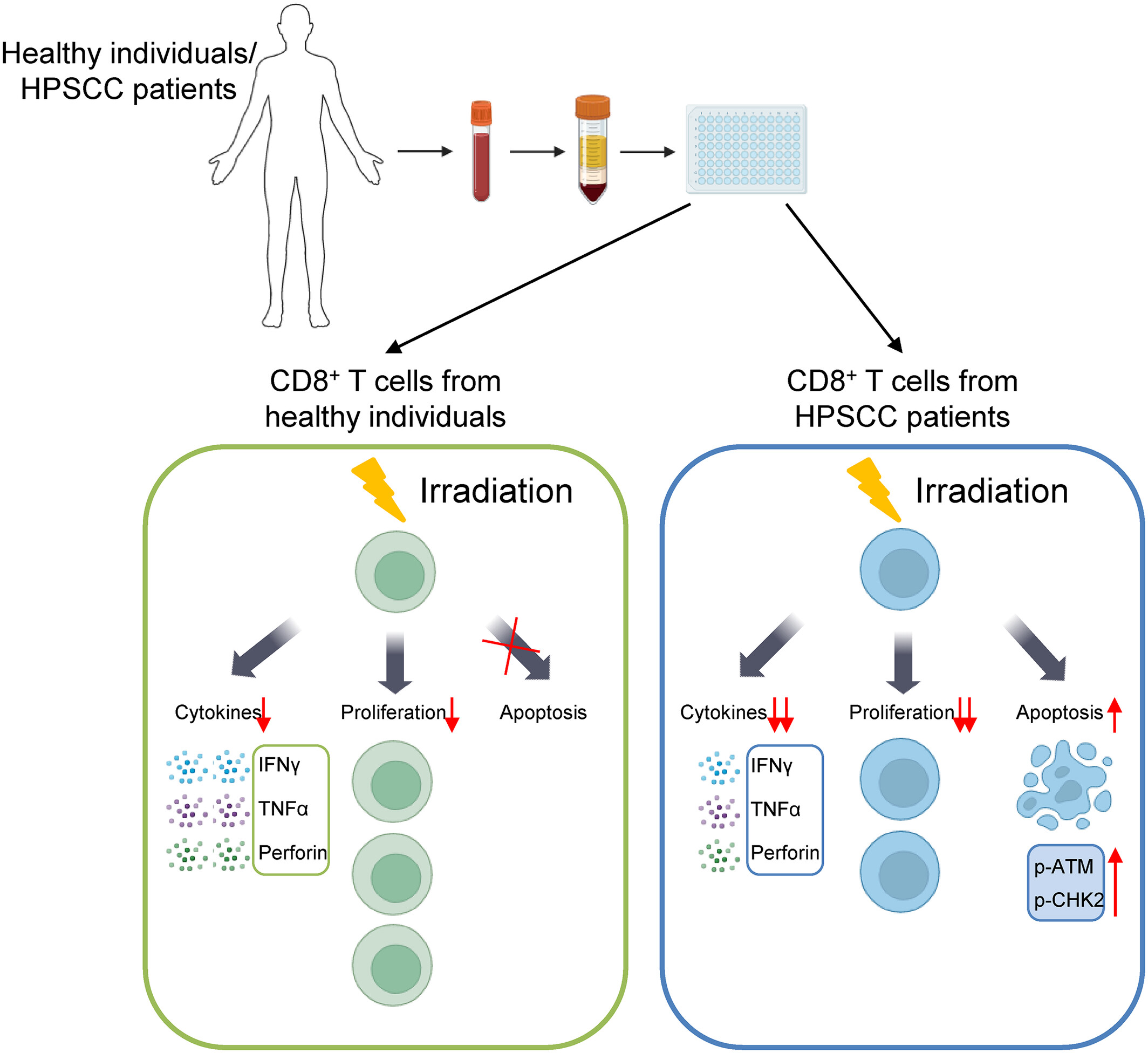
What's new?
Radiation-induced lymphopenia often limits the benefits of radiotherapy in hypopharyngeal squamous cell carcinoma, the head and neck squamous cell carcinoma with the most unfavorable prognosis. Existing data on the effects of radiation on specific lymphoid subtypes remains limited. Here, the authors analyzed the profiles of peripheral T lymphocytes from patients with hypopharyngeal squamous cell carcinoma and healthy individuals upon irradiation. The CD8+ T cells from patients were more sensitive to radiation-induced damage than those from healthy individuals. The findings also highlighted the ATM-Chk2 pathway as a potential therapeutic target for safeguarding CD8+ T cells against radiation-induced damage.
Tumor Markers and Signatures
FGFR2-RUNX2 activation: An unexplored therapeutic pathway in luminal breast cancer related to tumor progression
- Pages: 2024-2038
- First Published: 28 December 2024

What's new?
The fibroblast growth factor receptor FGFR2 and the transcription factor RUNX2 are both implicated as possibly contributing to the aggressive growth of luminal breast tumors, but little is known about how they may interact. Here, the authors show that increased FGFR2 activity led to higher RUNX2 expression, cell proliferation, and metastasis, while silencing FGFR2 had the opposite effect. Patients with high RUNX2 activity tended to have lower progression-free survival than those with low RUNX2 activity. RUNX2 could be a promising therapeutic target and prognostic biomarker in luminal breast cancer.
LETTER TO THE EDITOR
Comments on “Associations of plasma omega-6 and omega-3 fatty acids with overall and 19 site-specific cancers: A population-based cohort study in UK Biobank”
- Page: 2039
- First Published: 20 January 2025
Reply to: Comments on “Associations of plasma omega-6 and omega-3 fatty acids with overall and 19 site-specific cancers: A population-based cohort study in UK Biobank”
- Pages: 2040-2046
- First Published: 20 January 2025




